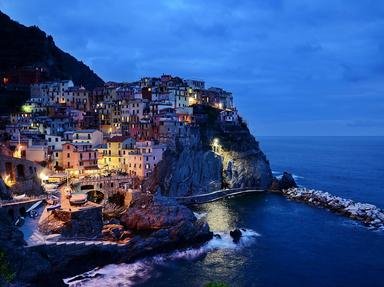Quiz Answer Key and Fun Facts
1. Arancini are stuffed, crumbed and fried balls of rice common in Sicily. How do the arancini of eastern Sicily differ from those in the rest of the island?
2. Italy is known as a volcanically active country. Besides Sicily and Campania, where the most significant active volcanoes are located, which "capital" region contains a large number of dormant and extinct volcanic centres?
3. Which of the following cars is NOT Italian?
4. Over 250 Catholic saints were born in Italy. Which two are considered the patron saints of the country?
5. La Scala is a premier Opera House in Milan, Italy. What date does the opera house begin its season each year?
6. What is the name of the radiant heat system invented by the Romans?
7. The area which was first called a ghetto was in which Italian city?
8. Lovers of nature will find a lot to enjoy in Italy's many national parks. A small, endemic population of what iconic mammal lives in Abruzzo, Lazio and Molise National Park?
9. The Peroni brewery is one of the best known in Italy and is exported throughout Europe. Its pale lager is called Nastro Azzurro, which translates to what?
10. Michelangelo's 'David', 'The Adoration of the Magi' by Leonardo, 'David' by Donatello, and 'Madonna of the Goldfinch' by Raphael.
All classical works of art by Renaissance artists, but which flowery Italian city do you need to visit to see them 'in the flesh'?
Source: Author
smpdit
This quiz was reviewed by FunTrivia editor
agony before going online.
Any errors found in FunTrivia content are routinely corrected through our feedback system.

